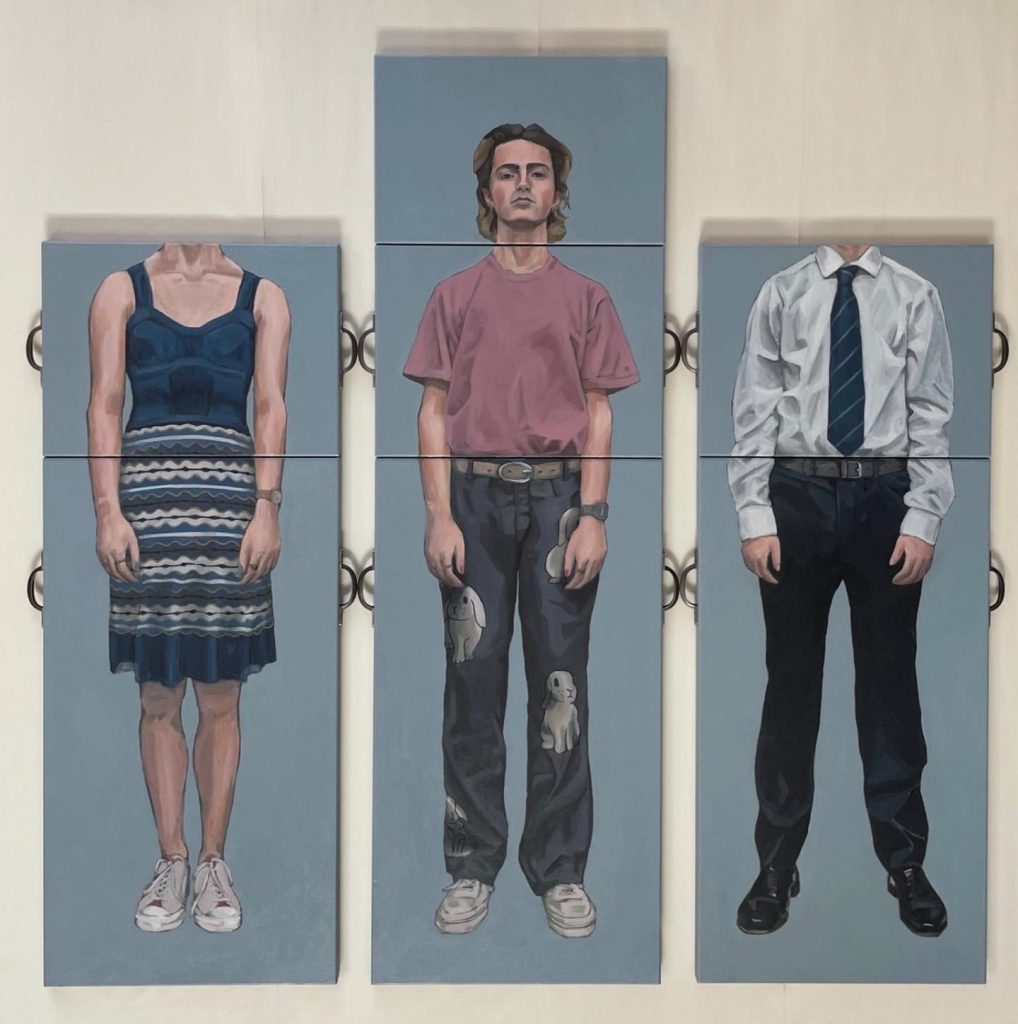
Bill Chalmers @bill_chalmers has just completed the first two modules on the Foundation Diploma during which students explore and test a range of disciplines and are supported to work towards specialising in their chosen direction. We asked him about the influences, ideas and process of his recent work.
What have you been working on recently?
Two of the most recent projects I’ve been working on are called ‘Misfits’ and ‘Tea Party’. They are going to be part of a series of three pieces of work that are based on childhood fantasies.
Tell us more about the ideas you explore in these pieces
I think that as a child you have an unfiltered outlook on life, which is particularly relevant to gender. It’s interesting how early we have the standards of gender imposed on us. It begins with colours (pink for a girl and blue for a boy) and then often propagated throughout our childhood by the toys we are given.
As I look back on my childhood, I seem to remember not feeling confined by gender restrictions. I would dance when I wanted to, to the music I wanted, wearing what I wanted. But when the teenage years hit, it was easier to conform in order to fit in with others.
In these pieces of work, I wanted to transport back to my childhood and claim a bit of that seven-year-old attitude. Each piece is based on something I used to do or play with as a child. And so, they each involve an element of participation from the audience because I want the people who look at it and interact with it to also have that reintroduction to childhood games but in a very different context.
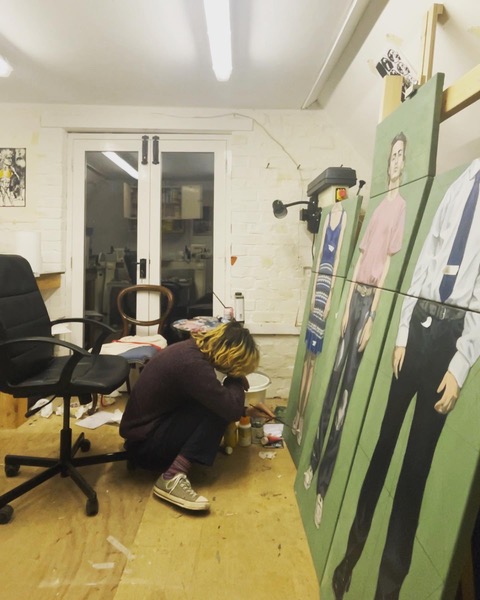
What inspired your work ‘Misfits’?
‘Misfits’ is based on a card game, which has also taken the form of a book or more recently a digital game, in which you have a selection of characters each split up into hats, heads, torsos, legs. The aim of the game is to combine cards to create different characters. I was thinking about how some children would like to put all the cards together with their same character’s cards, while others would create mutant horrors, and I thought this might be quite an interesting experiment to run with an adult audience.
My version of the game is just shy of life-sized because I wanted the audience to feel like they are creating a real person when they are mixing the panels around – so when the panels are aligned the painting almost starts to breath.
What is the significance of the three characters you’ve focused on?
The three characters in my work represent the ideals of masculinity and femininity that I was surrounded by when I was young. I have represented a ‘power suit’, the armour of the ‘default man’ (as Grayson Perry would describe it). This is one of my father’s suits, the uniform he would put on for a corporate day out. To me as a child, this was both the representation of what a man should be but also where I thought I was inevitably going to end up.
On the other side is one of my mother’s dresses. To me this dress represented an aspect of women’s clothing that was ever out of reach, the area of the Venn diagram that doesn’t overlap. Although I didn’t necessarily wish I could wear one, because they seem so impractical, dresses were just so much more fun and beautiful than anything I was allowed to wear.
And then finally, in the other option is where I find myself sitting most comfortably in the world of clothes.
I debated a lot over the decision to have just one head in the painting. I decided to go with one head rather than three so that I was showing one person who had three options and to also encourage the audience to swap the panels around. So ultimately this is a Bill-centred version of Misfits.
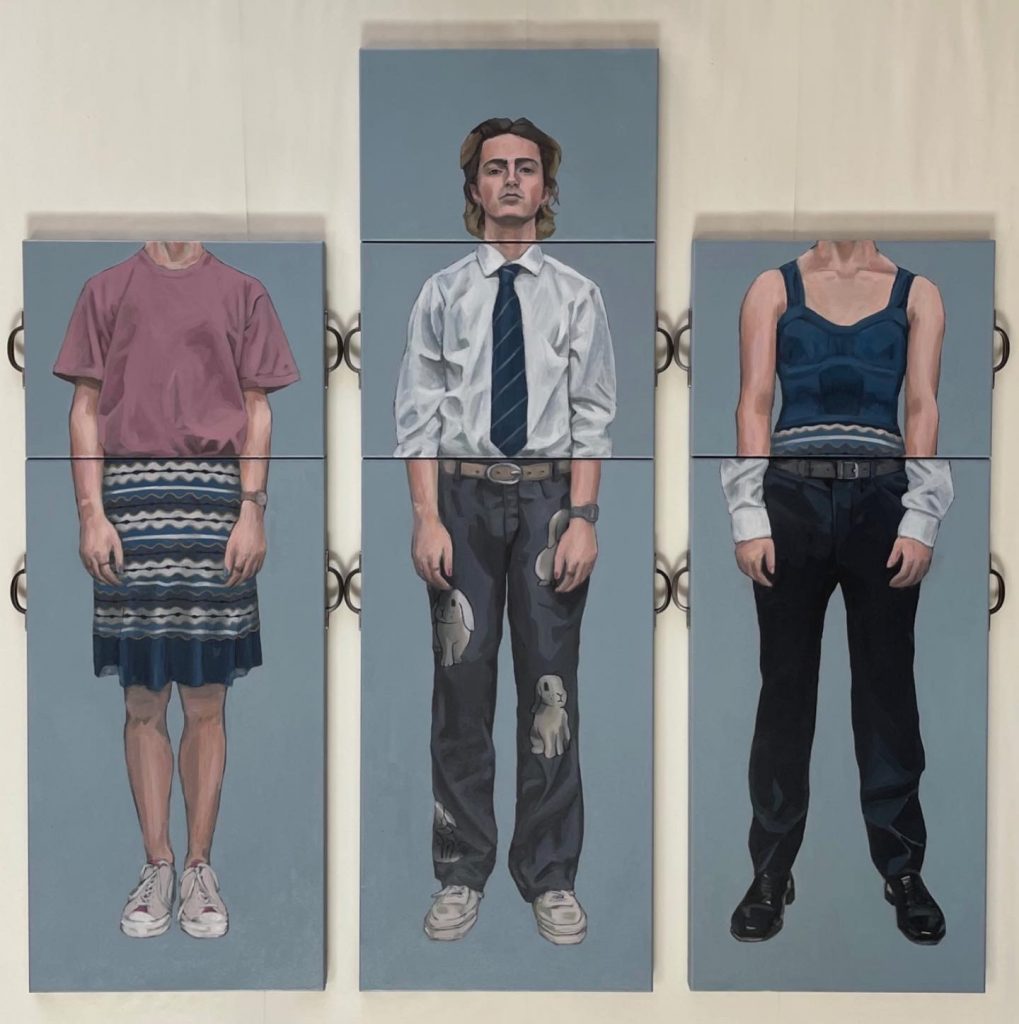
How did the game format of the piece affect the material process?
To make the Misfits game work, the seven canvases all needed to be quite specific sizes in relation to each other and I eventually had to get custom stretchers to make the canvases, which took about a month to arrive. But this splitting up of the canvases does make the painting easier to make in such a small space and easier to carry around as well.
I also added handles to each of the canvases (other than the head) so the audience would know intuitively that they were able to move the canvases without being told what to do. I’m interested to see how the audience interacts with the piece when it’s exhibited.
Can you describe the painting process you used on this piece?
I wanted the style of painting of the fabric clothes and the skin to be different, similar to a John Singer Sargent painting. I decided to paint the flesh tones in a number of glazes working up from a green underpainting. I chose this process because I wanted the figure in the painting to be reminiscent of renaissance figure painting which used the same technique. This was the first time I had attempted this process and it came with its challenges. Each glaze takes a day to dry so I had to have a routine of doing one glaze each morning and then moving on to different areas of the painting. However, I think this process actually sped up my painting process because each mark I was making wasn’t removing the one that was underneath but adding to it.
For the fabrics, which I wanted to have a more modern flattened feel, I painted them almost entirely in acrylic and only added a few blending finishing touches right at the end in oil. I find the quick drying nature of acrylic frustrating when trying to achieve smooth blends. So I approached acrylic like a relief woodblock print. I started by painting the entire area in the darkest tone of the darkest shadow and then gradually made the area I was painting smaller as I lightened the tone and increased the vibrancy of the colour. So the way I was painting was sort of like doing a relief woodblock print up with about 20 different layers. I admit this isn’t the most economical way of painting, but it worked for me and meant I was always able to have a template to work from for my next layer of paint.
Tell us about your second piece titled ‘Tea Party’
‘Tea Party’ is the second in the childhood fantasies project and is also a response to how I have been taking lockdown. I made this about three months into the current lockdown when I found myself really missing a night out and so I thought about what I would have done when I was a younger to remedy the situation. As a child I would have played pretend so I thought I would have a tea party but instead of a tea set I would use a fake set of alcoholic drinks.

I originally didn’t intend on making the tea set models myself, but it turns out you cannot buy children’s toys in the shape of alcoholic drinks, so I made the set from pieces of firewood using a laith. When I was younger, my Dad taught me how to use various woodworking tools and the laith was the one that I was drawn to the most. It only took one broken model for me to remember the best way to do it. After sanding the models, I finished them with the same oil that I use to thin my paint.
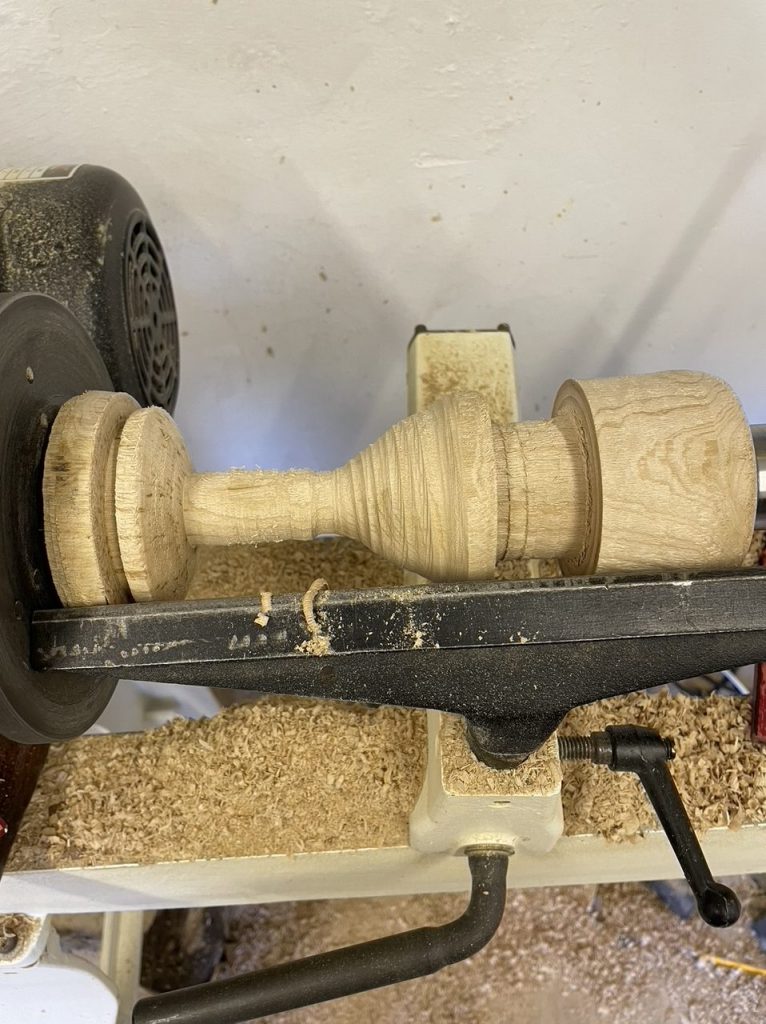
What were your main influences in this piece?
The outcome of this project was a film of me having a tea party with some teddies. I took inspiration from the 1972 living sculpture ‘Gordon’s Makes Us Drunk’ by Gilbert & George, which is an almost surreal film about the behaviour expected of us in social situations. I also wanted to use Van Gogh’s ‘The Potato Eaters’ as the reference point for the set that I made for this scene.
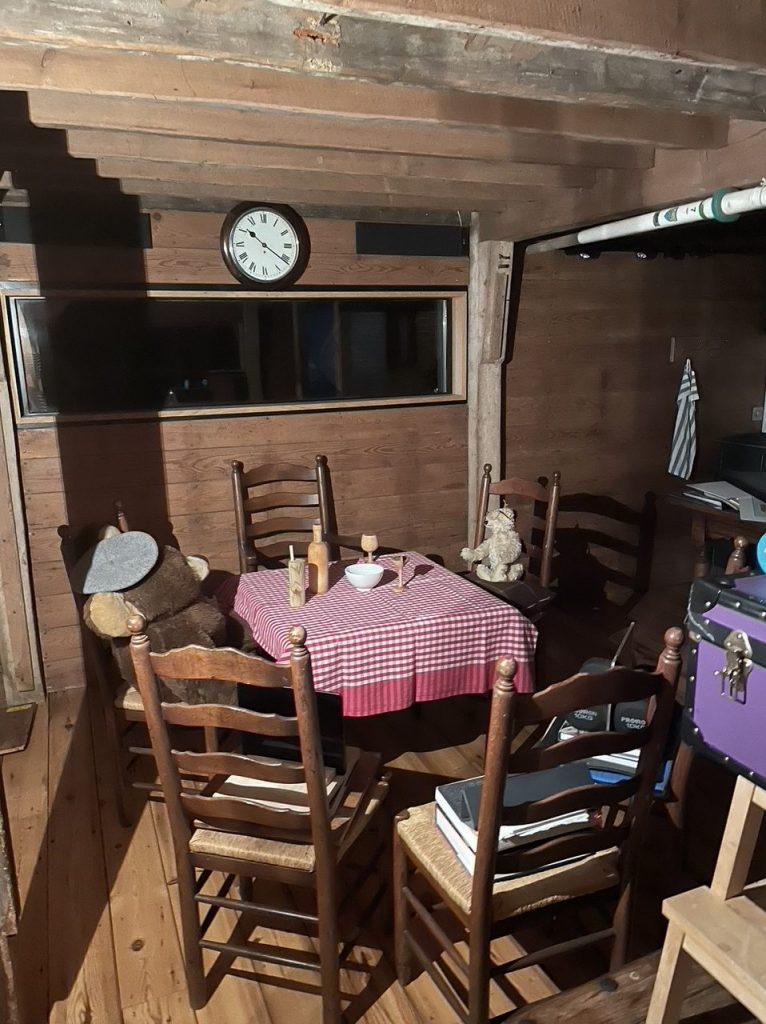
Foundation Tutor Gareth Brookes recommended some films to watch as research which helped with the style choices, but other than that I wanted to try and make this without any knowledge of how to make a film. I think there is a lot of value in naïve art making, as I have no fear of failure, and that is what I was trying to exploit when making this film.
I am really pleased with the general sense of insanity that comes across in this piece. I think the combination of the repetitive music and deadpan delivery gives anyone who watches the same sense of desperation I felt when filming it. I suppose this film blurs the lines between documentary and fiction. Like the whole of this series of work, it is meant to address a fairly serious experience but in a tongue-in-cheek way. It is meant to be slightly absurd but also scarily real, after all this was easily my best night out during the lockdown.
Will this work influence the direction of your practice?
Making this film has opened up a new direction for my art to go in and made me think about my choice of media more clearly. The final project in this series of three is going to be a sculptural interactive painting that links to both of these two projects. This will be my final project on the Foundation Diploma and should take the whole of this summer term.
Photos courtesy of Bill Chalmers @bill_chalmers


